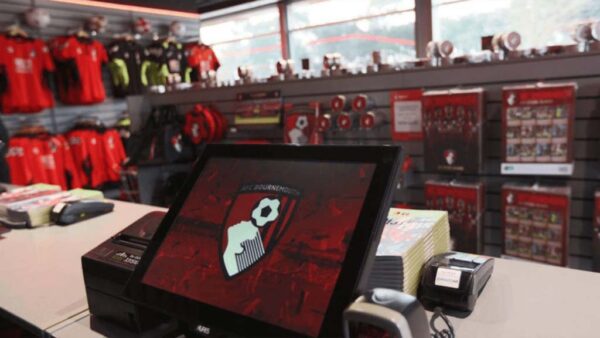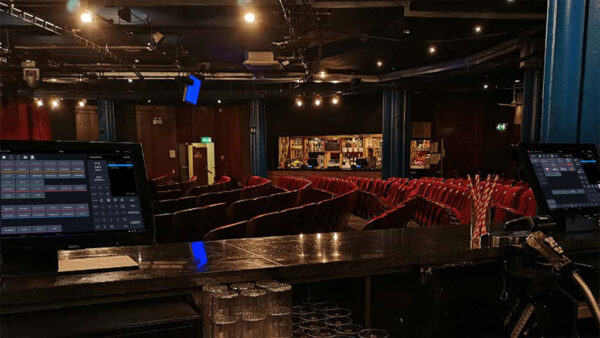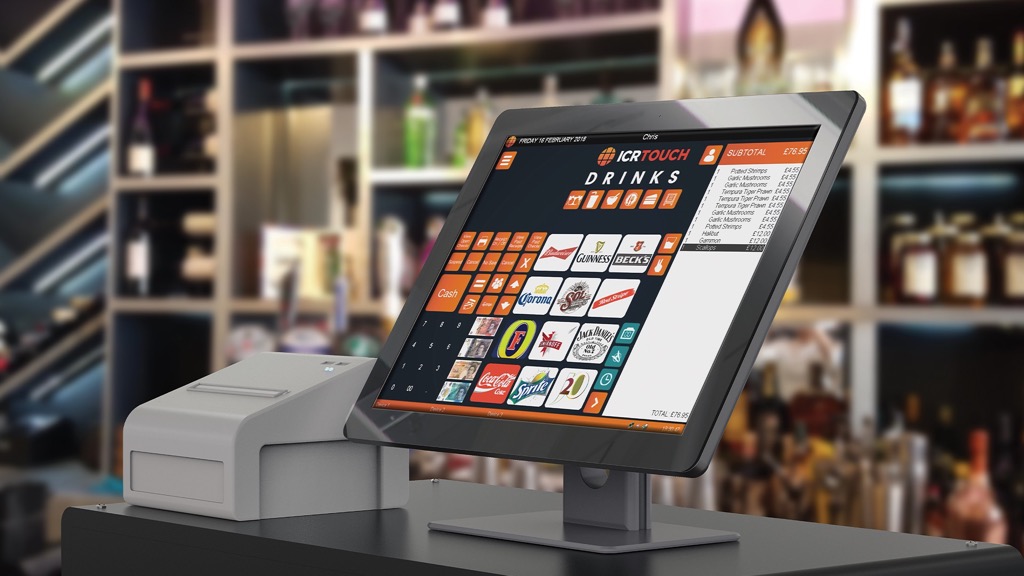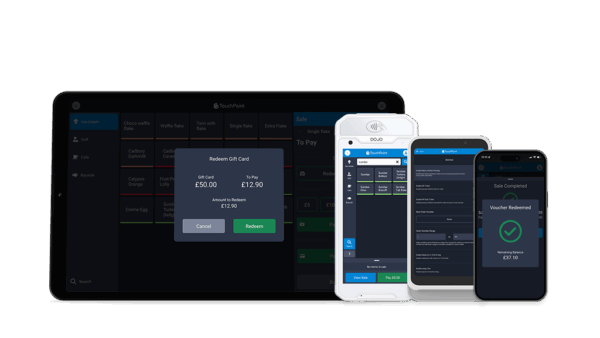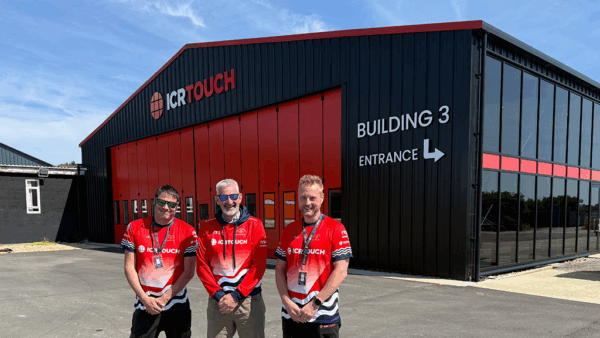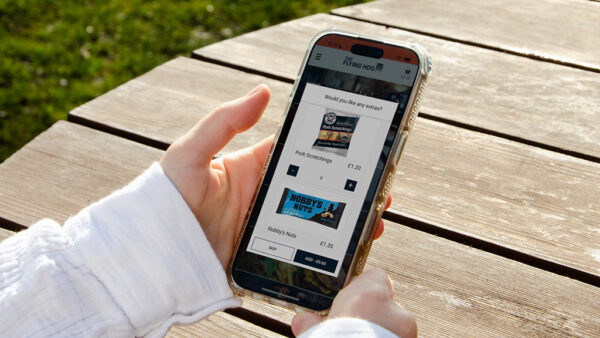Glossary Of Terms
1D Scanner
Barcode scanner that scans 1-dimensional barcodes, traditional barcode made up of varying black and white bands that reflect light produce a code.
2D Scanner
A scanner that scans 2-dimensional barcodes, also known as QR codes. These have 2 dimensions of black and white pixels that reflect light to produce a code.
Account
A customer having a relationship with a business, either through credit terms or loyalty scheme.
Acquiring Bank
An Acquiring Bank enters into an agreement with a business and provides a bank account to deposit credit card payments into. It exchanges funds with the Issuing Bank and places these funds into the Merchant Bank Account minus any fees.
Backoffice Software
Software that connects to an EPoS system to handle complex reporting, stock control, customer management, and other management functions.
Barcode
A barcode is made up of varying black and white bands that reflect light produce a code.
Bill
An itemised list of a statement of charges or fees or a written or printed account or statement of money owed such as an account for food or drink in a restaurant.
Cash Drawer
A drawer, usually set in a cash register or EPOS system, that holds cash tendered from sales, as well as credit card receipts and other paperwork and change. Cash drawers should be secure and resistant to force.
Cash Register
Simple mechanical device used for recording sales and storing cash during a sale or transaction where money is exchanged for goods. Although technically incorrect, Electronic Cash Registers and EPoS systems are also referred to as Cash Register.
Chip And PIN
A system for processing credit cards – or other smartcards – requiring the customer to enter a unique identification number instead of a signature to authorize a payment.
CID
Caller ID, this is the number of the caller sent down the phone. TouchPoint and many other EPOS systems are capable of capturing this number and using it to look up customers in their database for capturing against telephone orders for home delivery.
Cloud-Based
Hosted service delivered over the internet to both fixed and mobile devices. The service or application processing is performed within the hosted environment, with just the user interface component available on the user’s device via the internet. The internet is often referred to as the cloud due to the nebulous way the infrastructure is routes data, the actual network paths are abstract concepts with no defined route from startpoint to endpoint, hence the term cloud based for services delivered through the internet.
Compulsory Cash Declaration
Forces the manager to declare the amount of cash counted from the cash drawer when performing the end of day readings on the till.
Contactless
A method of payment that uses a “tap” or “swipe” method on the credit/debit card to allow low-value payments for goods without the need to authorise the payment through traditional means such as PIN. Aimed to speed up payment for low-value sales. Some contactless payment systems, such as ApplePay, may include a biometric element (e.g. fingerprint) for additional security.
CRM
Customer Relationship Management is a term used for the practices, analysis, and technologies for customer interactions and data throughout the customer lifecycle; the aim is to improve the business relationships with customers.
Customer
A person who buys goods or services from a shop or business
Customer Display
A screen facing the customer connected to the EPoS system that displays relevant information to the customer such as the sale information, additional offers, upselling or other promotions, loyalty balance or relevant advertisements.
Dashboard
A screen or facility used to keep track of information in real time. Often has various “widgets” to provide information about different areas of interest.
Digital Signage
Digital signage uses digital screens or monitors to provide information, wayfinding, placemaking, exhibitions, public installations, marketing, and outdoor advertising through use of content management systems and digital media distribution systems. These create a customised experience for the target user.
E-Commerce
Short for electronic commerce, is trading in products or services using computer networks, such as the Internet
EAN
International Article Number (previously European Article Number) assigned to products as a unique reference number. 13 digit number assigned to a barcode
EDI
Electronic Data Interchange is the standardised format for electronic exchange of data and documents between computer systems and business partners; for example, between a PoS system and back-office systems from different vendors.
EFT Provider
EFT stands for Electronic Funds Transfer. EFT provider supplies either the credit card machine, the service the processes the payment or receives the money into the business bank.
Electronic Cash Register
More advanced than a Cash Register, the Electronic Cash Register uses a processing unit to allow complex services such as multiplication and discounts. Similar to a large calculator.
EPoS
Electronic Point of Sale.
EPoS Dealer
The EPoS Dealer is the company that provides services and EPoS equipment to end customers. Often referred to as resellers because they resell hardware or software licences from the respective vendors.
EPoS Licence
Software is often sold under licence to be used, a legal instrument governing the use and redistribution of the software; the caveats of which are usually defined through End User Agreements or Terms and Conditions. An EPoS licence is granted to a User to use the EPoS software, normally in exchange for money and in accordance with any applicable End User Agreements.
EPoS Software
Software application running on the computer that performs the Point of Sale function. May be different to the hardware supplier.
EPoS System
A computer device that runs the Point of Sale software, this is more complex than an Electronic Cash register and can be programmed to perform complex operations, store and create reports, manage stock or control and interface with other applications.
Gift Aid
A scheme enabling registered charities and community amateur sports associations to reclaim tax on a donation made by a UK taxpayer, effectively increasing the amount of the donation.
HALO
High Amount Lock Out, a feature to prevent ringing in very high values by mistake. EG mistyping £1000 instead of £10 the effects of which can be limited by locking out high values. Mainly used on products with an Open or Miscellaneous price.
Hardware
The physical parts of a system such as the screen, hard drive, keyboard. Rather than the software applications running within the operating system inside the device.
Hospitality
Broad category within the service industry including Cafes, Restaurants, Pubs, Bars, Clubs, Hotels, Cruise Liners. The industry is built around leisure time and the ability to spend disposable income.
ICRTouch
ICRTouch are the leading provider of EPoS Software Systems, EPoS Touch Screen Till Software and Touch Screen Till Systems for businesses throughout the globe.
IOS
iOS (originally iPhone OS) is a mobile operating system created and developed by Apple Inc. and distributed exclusively for Apple hardware. It is the operating system that presently powers many of the company’s mobile devices, including the iPhone, iPad, and iPod touch.
Issuing Bank
The bank that issues credit cards, such as those stamped with VISA or Mastercard. The cardholder will have a credit agreement with the issuing bank to supply funds, which are then taken from their bank account.
Kitchen Video
Screen-based alternative to a Kitchen Printer, allows for more interaction between the preparation staff and the PoS, waiting staff or delivery drivers.
KP
Kitchen Printer. A printer, typically an impact printer (dot matrix) located in the area where goods are prepared. An example is a restaurant kitchen, where the order is placed and a printer in the kitchen prints a ticket with the details of the food that needs to be cooked. The concept is also extended to remote bar locations, delicatessens, and warehouses where goods are prepared and shipped in a location away from the Point of Sale.
LALO
Low Amount Lock Out is a feature that prevents underselling products.
Loyalty Scheme
A scheme available to account customers, members or the general public that encourages return custom via various schemes such as discounts, rewards, points, free items etc.
Magnetic Card
A magnetic stripe card is a type of card capable of storing data by modifying the magnetism of tiny iron-based magnetic particles on a band of magnetic material on the card. The magnetic stripe, sometimes called swipe card or magstripe, is read by swiping past a magnetic reading head.
Merchant Bank
The bank account provided by the Acquiring Bank where funds are deposited from the credit card issuing bank.
MiFare
MIFARE is NXP’s well-known brand for a wide range of contactless IC products, some often refer to all proximity devices as a MiFare device in a similar way to calling a Vacuum Cleaner a Hoover.
Mix And Match
A promotion where you can buy multiple different products for either a set price or other discounted amount.
Network
A computer network or data network is a telecommunications network which allows computers to exchange data. Network links can be wired or wireless, and the internet is also made up of many interconnected public networks.
NFC
Near Field Communications allow devices to communicate when they are in close proximity. There are many different formats and radio frequencies that devices can operate on, and only compatible devices will be able to communicate with each other. Examples include contactless payments via card or smartphone. Accessories that trigger when NFC enabled devices near, such as nightstands or door locks in hotels.
Non PLU
This refers to products, often fresh food products, where the price is not looked up by the register/computer at the time of sale but rather, the price is obtained directly from the barcode.
Non-Turnover
In EPoS Non-Turnover refers to actions that do not affect the business turnover, in otherwords are not counted as sales and do not count towards sales turnover or profit levels but could affect stock levels.
Payment Gateway Provider
A 3rd Party that processes the transaction between a card issuer and the acquiring bank.
PCI Compliance
The ability to comply to the relevant security standards developed by the PCI Security Standards Council.
PCI DSS
Data Security Standard, one of the security standards developed by the PCI Security Standards Council relating to card data storage, processing, and transmission.
PCI PA-DSS
Payment Application Data Security Standard. A security standard developed by the PCI Security Standards Council for applications involved in credit card transactions.
PCI PTS
Pin Transaction Security. A security standard developed by the PCI Security Standards Council for credit card transactions that are authorised by PIN.
PCI Security Standards
The set of rules that merchants, vendors and service providers must comply with when involved with card transactions.
PCI Security Standards Council
The Payment Card Industry is the global governing body who are responsible for the development, management, education, and awareness of the PCI Security Standards.
PDQ
Stands for Process Data Quickly. A machine that takes credit/debit cards and processes a transaction with an Acquiring Bank or Payment Gateway Provider. Can be a chip and PIN device, or a simple Magnetic Card Reader.
PED
Pin Entry Device, normally for taking credit card payments like a PDQ machine but will have a Chip & PIN facility rather than just a magnetic swipe reader.
Peripheral
A peripheral is a “device that is used to put information into or get information out of the computer.
PIN
A personal identification number (PIN, pronounced “pin”; often redundantly PIN number) is a numeric password shared between a user and a system, that can be used to authenticate the user to the system. Typically, the user is required to provide a non-confidential user identifier or token (the user ID) and a confidential PIN to gain access to the system.
Pin Pad
See PED.
PLU
Stands for Price Look Up and dates back to the early days of cash registers when you could call up preset prices by entering a number and pressing the Price Look Up button.
PMS
Property Management System, this is a term to describe many backend systems that are used for managing hotel rooms and bookings.
PoS
Point of Sale. The place and time that goods are ordered and funds are exchanged or credit is accepted.
PoS Maintainer
Provider of support and maintenance for the till system, often the supply of the system to the end customer.
Proximity Card
A card using near field communications to perform an action such as identify a customer or open a door lock.
QR Code
A machine-readable 2-dimensional barcode made up of a pattern of black and white squares, traditionally containing URLs but are often used in pos to encode discount vouchers and customer sign on information.
Queuebuster
A method of using a small mobile point of sale device to collect a list of items that customers in the queue for the till are purchasing, in order to speed up the throughput at the till and so ‘bust the queue.’
Random Code
The number used to make a barcode. Subject to a standard such as EAN13 or UPC.
Real-Time
The actual time during which a process or event occurs. Relating to a system in which input data is processed within milliseconds so that it is available virtually immediately as feedback to the process from which it is coming, e.g. in a missile guidance system.
Receipt
A receipt is a written acknowledgment that a specified article or payment has been received. A receipt records the sale of goods or provision of a service. Not to be confused with a bill or invoice.
Report
A report provides details about information gathered in an easy to understand format. In relation to EPoS, reports include details about sales, stock, commission, employee working hours, commission.
Retail
The functions and activities involved in the selling of goods directly to consumers.
Saas
Software as a Service. A term used for software running within a server, set of servers or virtual environment that is dislocated from the user. Often referred to as cloud-based services, hosted by the service provider and delivered over a network and typically sold on a subscription basis.
SKU
Stock Keeping Unit. A retailer’s product and service identification code often portrayed as a machine-readable bar code that helps the item to be tracked for inventory.
SMS
Short Message Service. Messages delivered over the mobile phone network, originally simple text-based messages of limited character length but has evolved to refer to any form of message or image content delivered through the mobile phone network.
Software
The programs and other operating information used by a computer.
Software Provider
Company developing and providing the software that performs the Point of Sale Function. Maybe different than the hardware provider or the EPoS dealer. Also referred to as Software Vendor.
SQL
Structured Query Language. This is a common form of database used by modern EPOS Systems.
Terminal
Often refers to the physical EPoS system rather than the software that runs on it, but it can also refer to peripheral devices such as the credit card machine.
Till
A generic term that could refer to Cash Registers, Electronic Cash Registers, EPoS System, TouchScreen Terminal.
Touchscreen Terminal
A computer that has a built-in touch screen that is used as it’s human interface.
UPC
Universal Product Code, a barcode format used predominantly in the US and Canada. UPC-A is 12 digit numeric code.
X Read
Similar to a Z Read in so much that it prints out your days’ totals, but an X Read differs in that it allows you to take a peak without actually resetting them back to zero.
Z Read
Typically used on cash registers and till systems at the end of the day to print out the sales totals and ‘Z’ero then ready for the start of the day.


